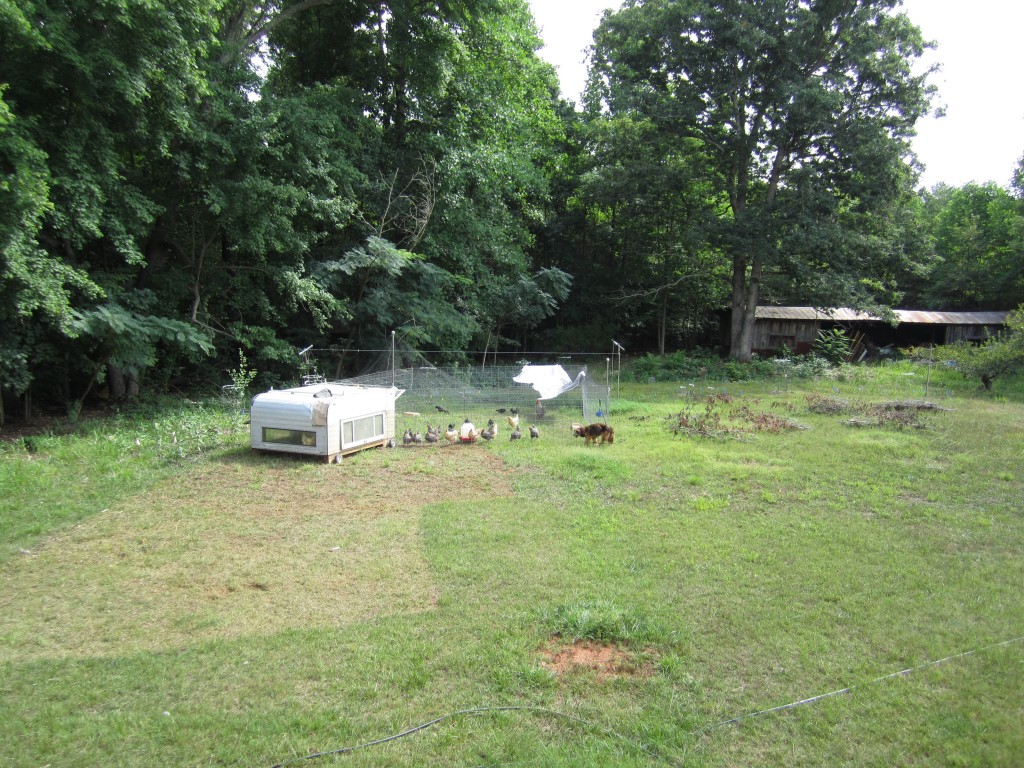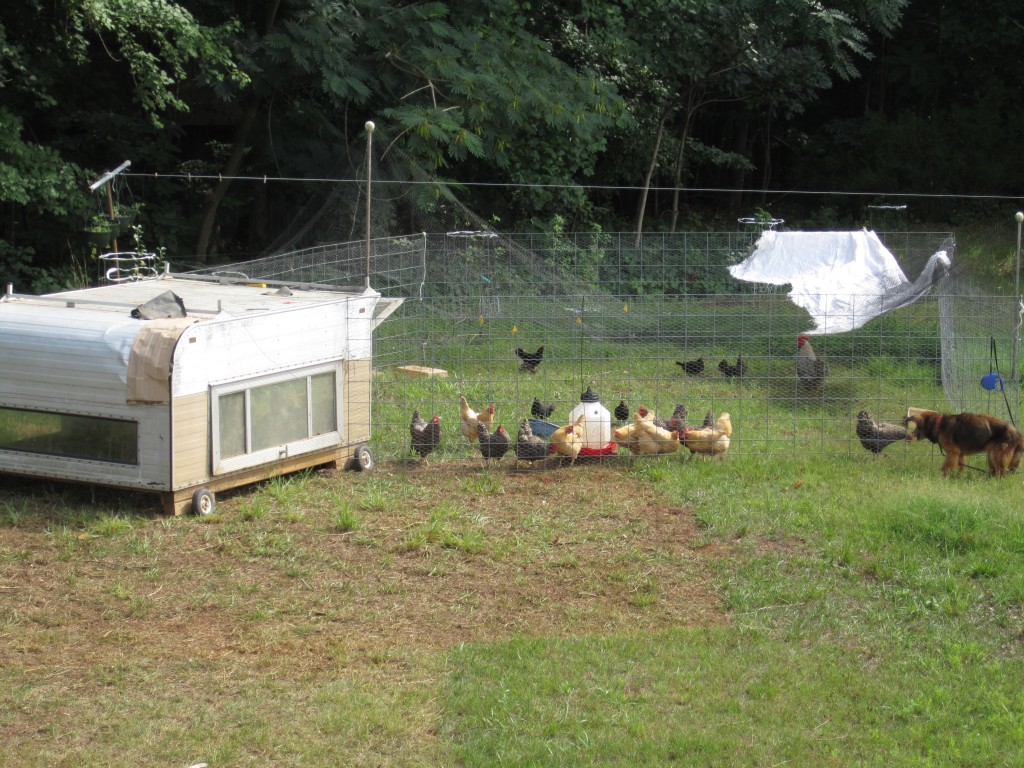Emma wrote the other day about our new mobile chicken run design, and after moving this system twice I figured I would give an update on its functionality. The chickens have been in this new setup for about 1 week. In our old system, we would typically wait 2 weeks before moving them to a new piece of pasture, but in the past week I have moved them twice. As Emma mentioned, even though the fenced area is half of what it used to be, because the coop is no longer inside, the chickens actually have around 75% of the space they used to have.
However, thanks to the redesign, moving the chickens is now a much easier proposition. It can be done at any time of day, and is now a 1 man job. Compare this to the old system where we had to wait until dusk, take down the entire thing, pull up posts, roll up the bird netting, put up the posts and panels, zip tie everything, by this point it was dark, we were frustrated, and we still had to untangle the bird netting and fix any rips that had happened. Not fun, and not a chore we looked forward to. This meant that we often put off moving the chickens, and the would end up staying in the same spot for longer than two weeks. This lead to overgrazing, compaction, and further frustration.
Our new system easily slides to a new spot, and because it is smaller (16 ft. by 16 ft.), it fits easier into tight spaces around garden beds and fruit trees. The hawk netting does not need to come off, there are no posts, and this can all be done at any time of the day. I have already done it twice, and at this rate the chickens will have access to 300% more pasture in 2 weeks than before. This allows us to more easily monitor their behavior and impact on the land, and more efficiently harness their energy toward improving our land, and avoid the harm that comes from overgrazing, all while they enjoy more grass, weeds, and bugs than ever before.
I think we learned a valuable lesson; that if you design an aspect of your life to be difficult, you will dread and avoid it, and when it doesn’t get done, it becomes harder and harder to catch up. This starts a cycle of stress and frustration that is hard to beat. However, if we design these things so that are easily accomplished, we are more likely to do them. This fits in with the permaculture concept of zones, where you design the elements of your property that need attention everyday (vegetable gardens, livestock, etc.) to be closer to your house where you constantly see and interact with them. For example, if you have to milk goats everyday, don’t put the milking area half a mile away, down a steep gully and then up a rocky hill. If you wan’t to remember to take a multivitamin everyday, don’t put the vitamins in that cabinet that you can’t reach unless you get that stool that’s in the garage.
It’s a simple concept, but we all have things that for one reason or another we have made harder for ourselves, whether it’s on a homestead or not. Some of things we can’t change, but the other ones should be designed to fit into our life in a way that enhances it, not make it harder. With thoughtful design, things tend to fit together easier and our life systems function more efficiently, giving us more time to focus on whatever it is we want to focus on, be it writing, working, gardening, or eating delicious eggs from pasture raised chickens.

